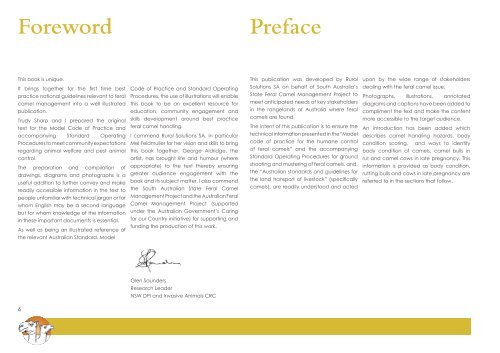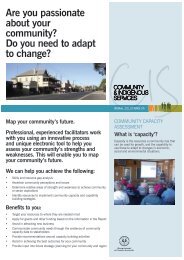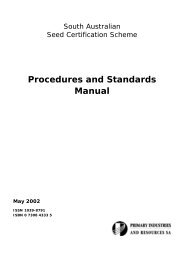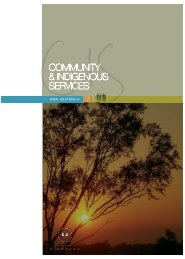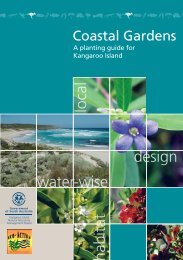Final May 22 Bes Practice Camel Book_web_part1 - Rural Solutions ...
Final May 22 Bes Practice Camel Book_web_part1 - Rural Solutions ...
Final May 22 Bes Practice Camel Book_web_part1 - Rural Solutions ...
- No tags were found...
You also want an ePaper? Increase the reach of your titles
YUMPU automatically turns print PDFs into web optimized ePapers that Google loves.
ForewordPrefaceThis book is unique.This publication was developed by <strong>Rural</strong>upon by the wide range of stakeholdersIt brings together for the first time bestpractice national guidelines relevant to feralcamel management into a well illustratedpublication.Trudy Sharp and I prepared the originaltext for the Model Code of <strong>Practice</strong> andaccompanying Standard OperatingProcedures to meet community expectationsregarding animal welfare and pest animalcontrol.The preparation and compilation ofdrawings, diagrams and photographs is auseful addition to further convey and makereadily accessible information in the text topeople unfamiliar with technical jargon or forwhom English may be a second languagebut for whom knowledge of the informationin these important documents is essential.As well as being an illustrated reference ofCode of <strong>Practice</strong> and Standard OperatingProcedures, the use of illustrations will enablethis book to be an excellent resource foreducation, community engagement andskills development around best practiceferal camel handling.I commend <strong>Rural</strong> <strong>Solutions</strong> SA, in particularMel Feldmuller for her vision and skills to bringthis book together. George Aldridge, theartist, has brought life and humour (whereappropriate) to the text thereby ensuringgreater audience engagement with thebook and its subject matter. I also commendthe South Australian State Feral <strong>Camel</strong>Management Project and the Australian Feral<strong>Camel</strong> Management Project (supportedunder the Australian Government’s Caringfor our Country initiative) for supporting andfunding the production of this work.<strong>Solutions</strong> SA on behalf of South Australia’sState Feral <strong>Camel</strong> Management Project tomeet anticipated needs of key stakeholdersin the rangelands of Australia where feralcamels are found.The intent of this publication is to ensure thetechnical information presented in the “Modelcode of practice for the humane controlof feral camels” and the accompanyingStandard Operating Procedures for groundshooting and mustering of feral camels, and,the “Australian standards and guidelines forthe land transport of livestock” (specificallycamels), are readily understood and acteddealing with the feral camel issue.Photographs, illustrations, annotateddiagrams and captions have been added tocompliment the text and make the contentmore accessible to the target audience.An introduction has been added whichdescribes camel handling hazards, bodycondition scoring, and ways to identifybody condition of camels, camel bulls inrut and camel cows in late pregnancy. Thisinformation is provided as body condition,rutting bulls and cows in late pregnancy arereferred to in the sections that follow.the relevant Australian Standard, ModelGlen SaundersResearch LeaderNSW DPI and Invasive Animals CRC6


